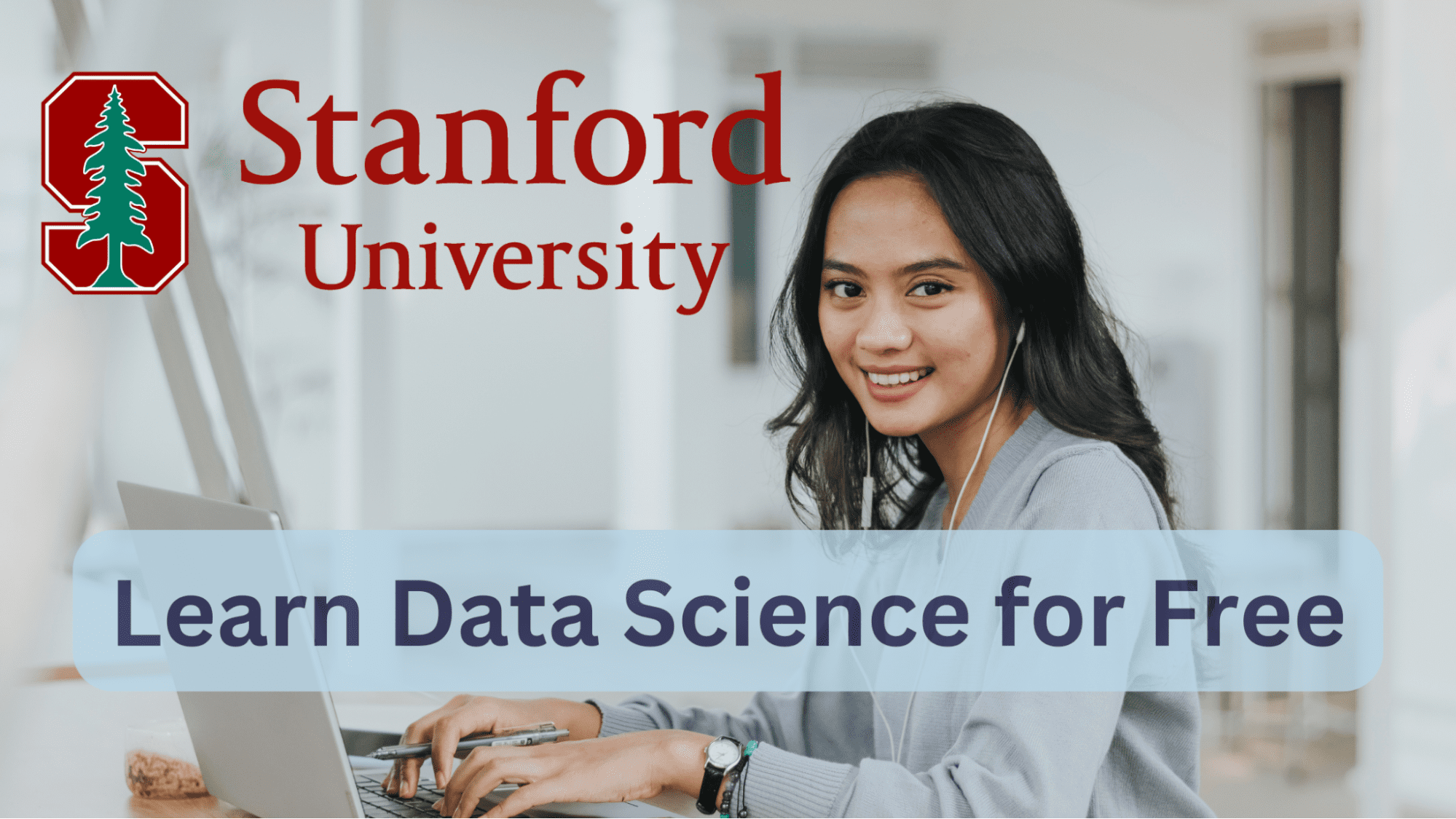5 Free Stanford University Courses to Learn Data Science
Are you an aspiring data scientist? If so, these free data science courses from Stanford will help you move forward in your data science journey!

Image by Author
Learning data science has never been more accessible. If you’re motivated, you can teach yourself data science—for free—with the courses from elite universities across the world.
We've put together this list of free courses from Stanford University to help you learn all the essential data science skills:
- Programming fundamentals
- Databases and SQL
- Machine Learning
- Working with large datasets
So start learning today to achieve your learning goals and kickstart your data career. Now let’s go over these courses.
1. Programming Methodology
To get started with data science, building programming foundations in a programming language like Python is important. The Programming Methodology class teaches Python programming from the ground up and does not assume any previous programming experience.
In this course, you’ll learn problem solving with Python while becoming familiar with the features of the language. You’ll start with the basics such as variables and control flow and then learn about built-in data structures like lists and dictionaries.
Along the way, you’ll also learn how to work with images, explore object-oriented programming in Python and memory management.
Link: Programming Methodology
2. Databases
A strong understanding of databases and SQL is important to succeed in any data career. You can take the popular databases course by Prof. Jennifer Widom as a series of five self-paced courses on edX.
Note: You can audit the course and access all course contents for free.
If you are new to databases, take the first course covering the basics of relational databases before you proceed to the courses on more advanced topics. By working through the series of courses, you’ll learn:
- Relational databases and SQL
- Query performance
- Transaction and concurrency control
- Database constraints, triggers, views
- OLAP cubes, star schema
- Database modeling
- Working with semi-structured data like JSON and XML
Links to the courses:
- Databases: Relational Databases and SQL
- Databases: Advanced Topics in SQL
- Databases: OLAP and Recursion
- Databases: Modeling and Theory
- Databases: Semistructured Data
3. Machine Learning
As a data scientist, you should be able to analyze data using Python and SQL and answer business questions. But sometimes you may also need to build predictive models. Which is why learning machine learning is helpful.
Machine Learning or CS229: Machine Learning at Stanford university is one of the most popular and highly recommended ML courses. You’ll learn everything you’d typically learn in a semester-long university course. This course covers the following topics:
- Supervised learning
- Unsupervised learning
- Deep learning
- Generalization and regularization
- Reinforcement learning and control
Link: Machine Learning
4. Statistical Learning with Python
An Introduction to Statistical Learning with Applications in Python (or ISL with Python) is the Python edition of the popular ISLR book on statistical learning.
The Statistical Learning with Python course covers all the contents of the ISL with Python book. So you’ll learn essential tools for data science and statistical modeling. Here is an overview of important topics that this course covers:
- Linear regression
- Classification
- Resampling
- Linear model selection
- Tree-based methods
- Unsupervised learning
- Deep learning
Link: Statistical Learning with Python
5. Mining Massive Data Sets
Mining Massive Data Sets is a course focusing on data mining and machine learning algorithms for working with and analyzing massive datasets.
To make the most out of this course you should be comfortable with programming, preferably with Java or Python. You should also be familiar with math: probability and linear algebra. If you’re a beginner, consider working through the courses mentioned earlier before you take this one.
Here are some topics this course covers:
- Nearest neighbor search in high-dimensional space
- Locality Sensitive Hashing (LSH)
- Dimensionality reduction
- Large-scale supervised machine learning
- Clustering
- Recommendation systems
You can use the Mining Massive Datasets book as a companion to this course. The book is also accessible for free online.
Link: Mining Massive Data Sets
Wrapping Up
This compilation of free courses from Stanford University should help you learn almost everything you need if you ever want to explore data science.
If you’re looking for university courses to learn Python and data science for free, here are a couple of articles you may find helpful:
Happy learning!
Bala Priya C is a developer and technical writer from India. She likes working at the intersection of math, programming, data science, and content creation. Her areas of interest and expertise include DevOps, data science, and natural language processing. She enjoys reading, writing, coding, and coffee! Currently, she's working on learning and sharing her knowledge with the developer community by authoring tutorials, how-to guides, opinion pieces, and more. Bala also creates engaging resource overviews and coding tutorials.
